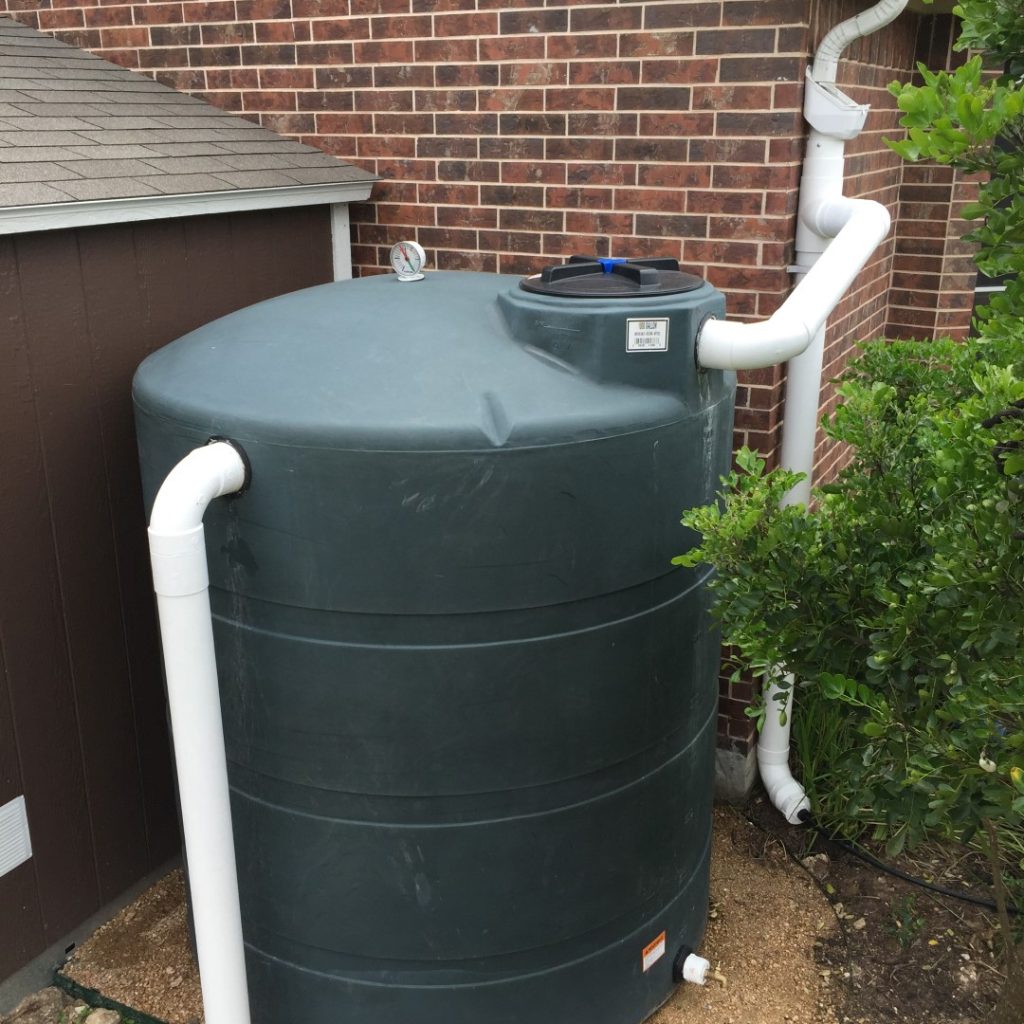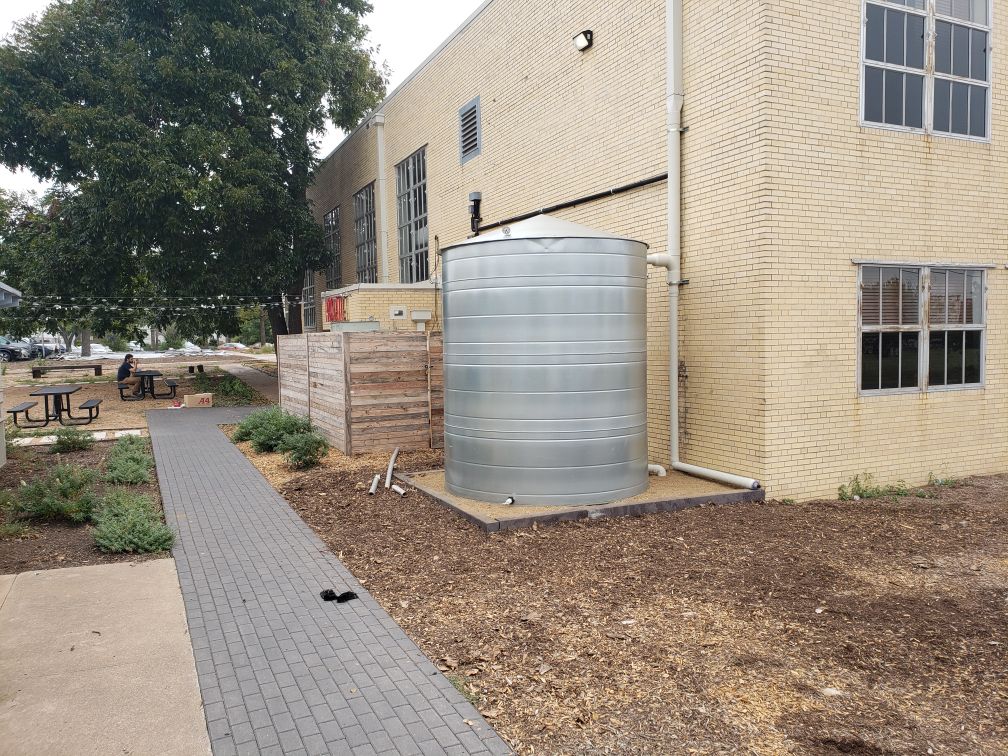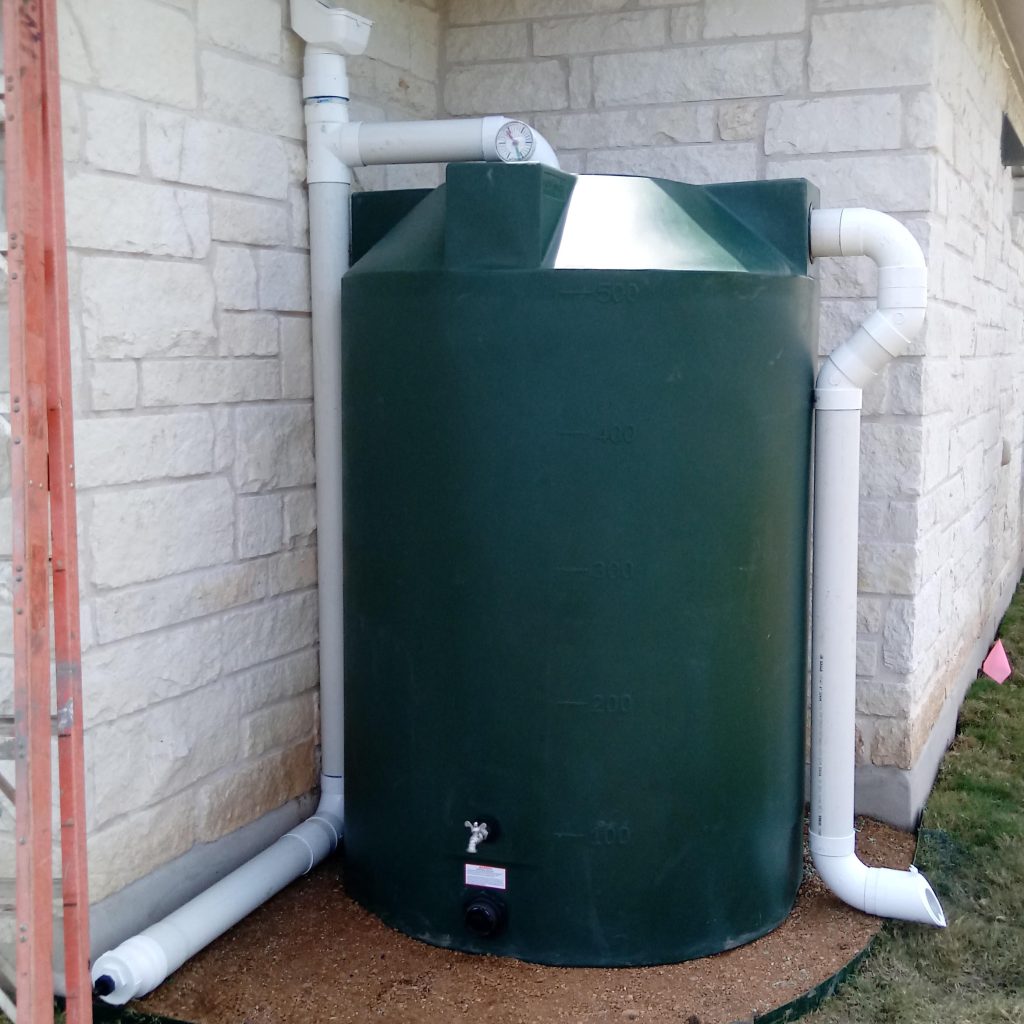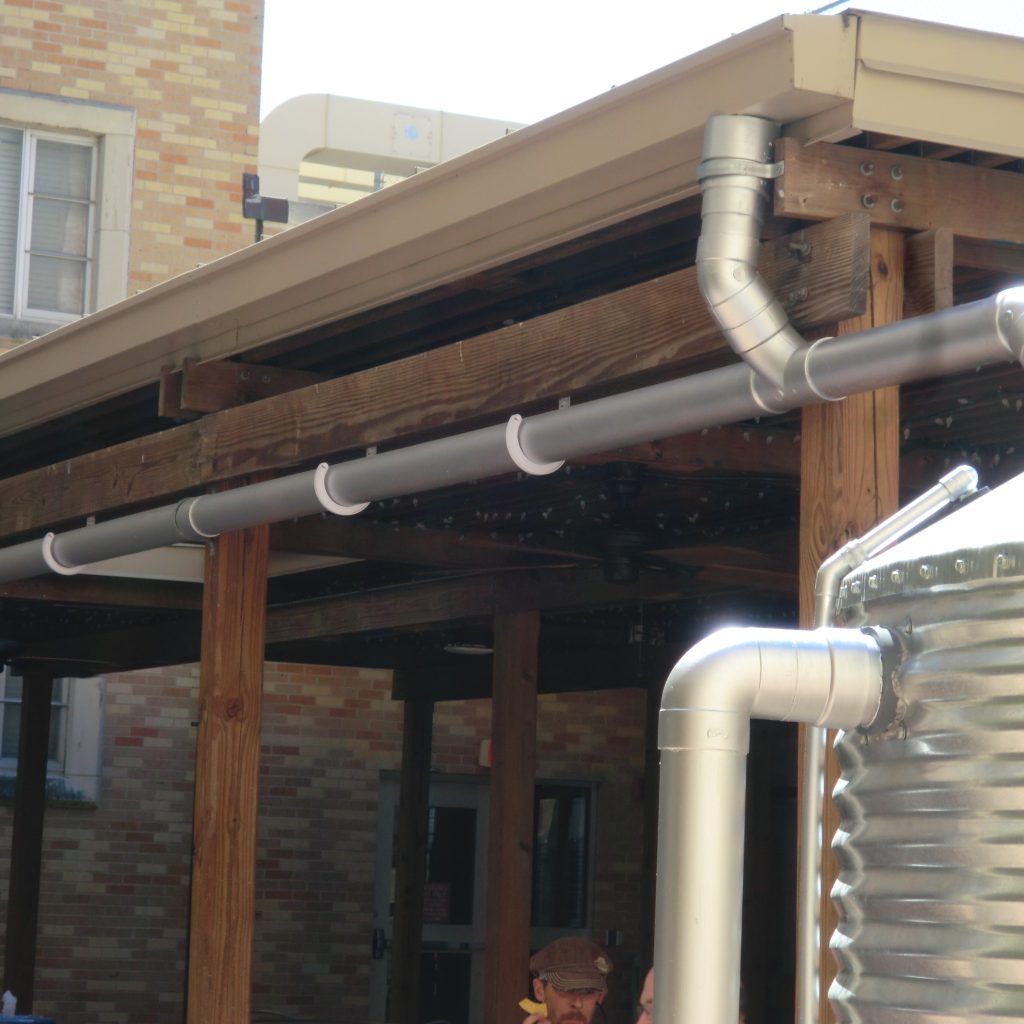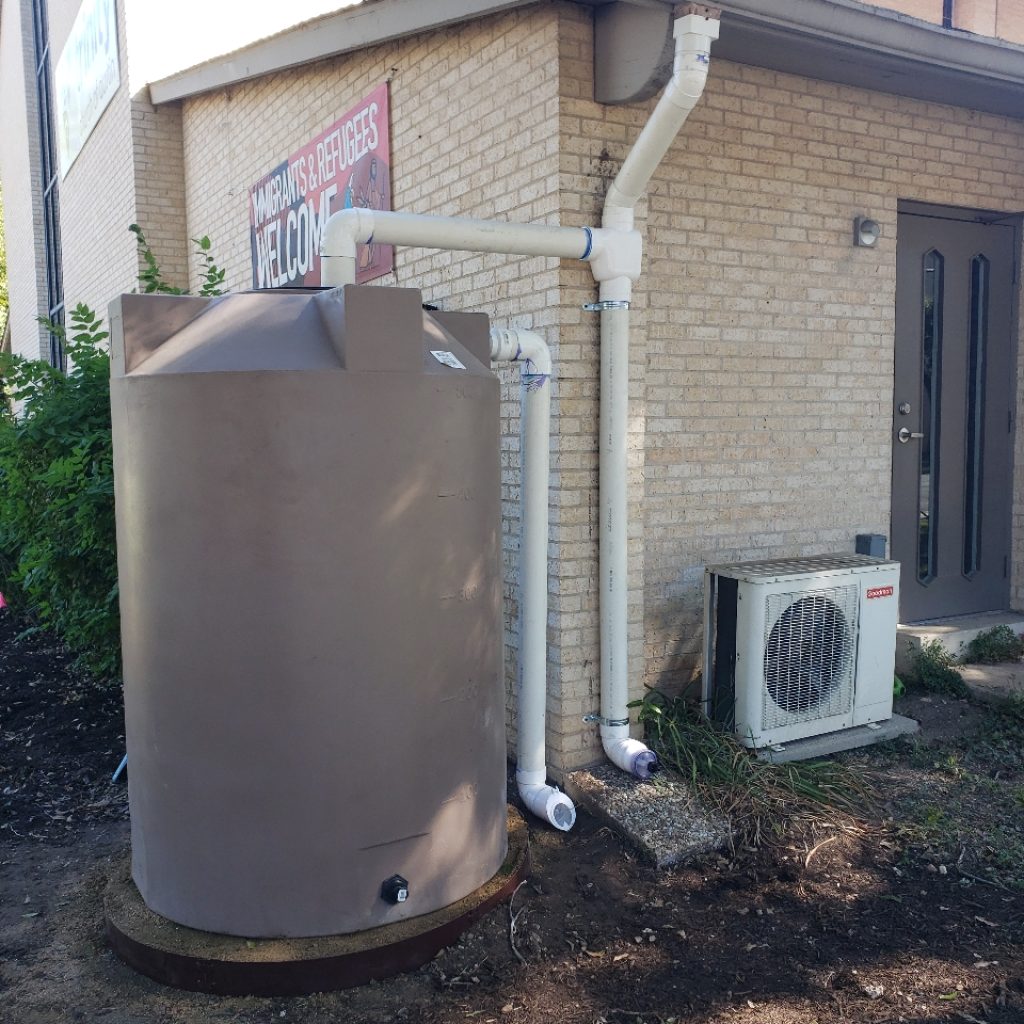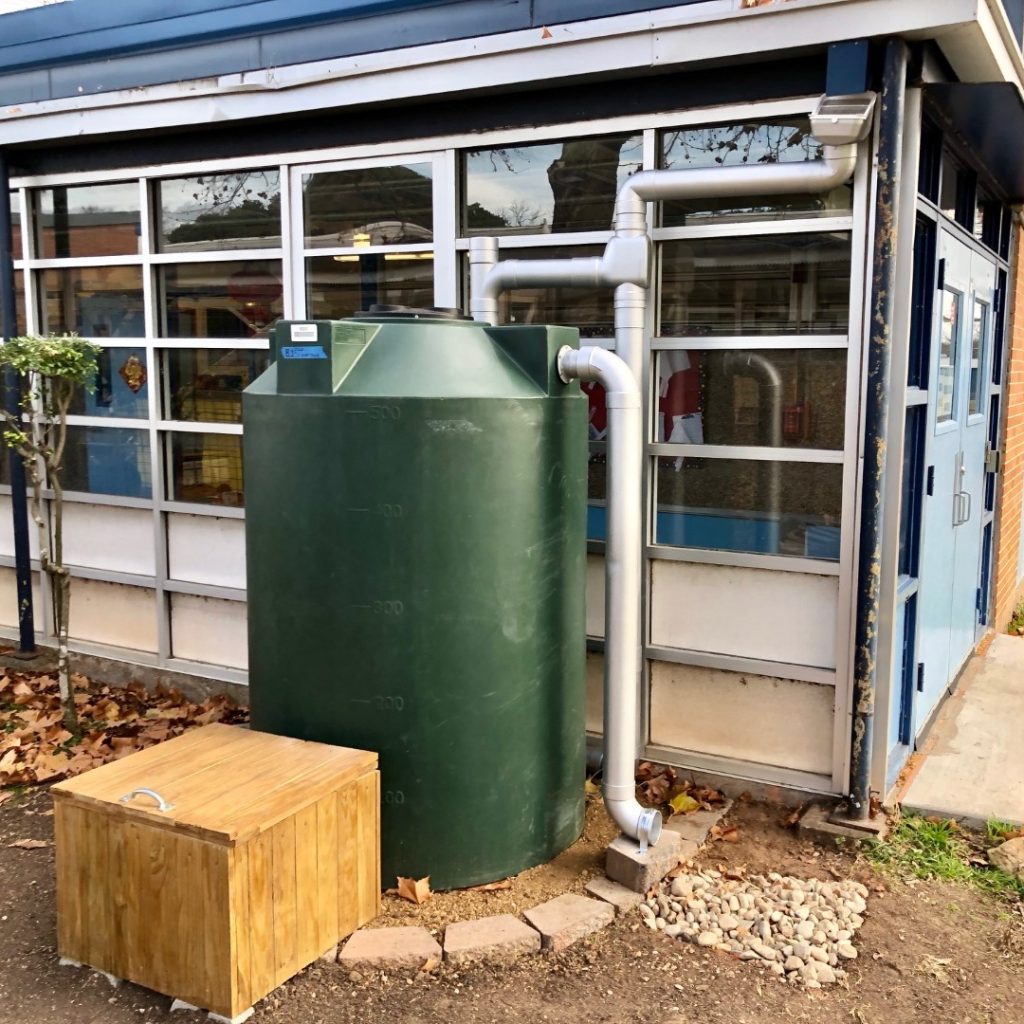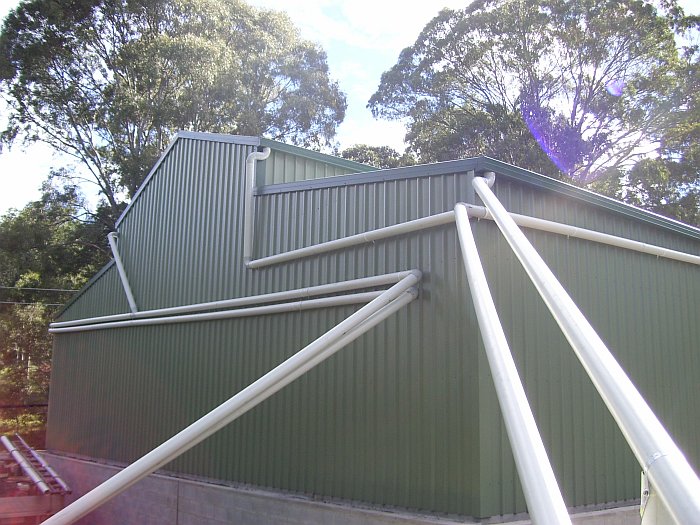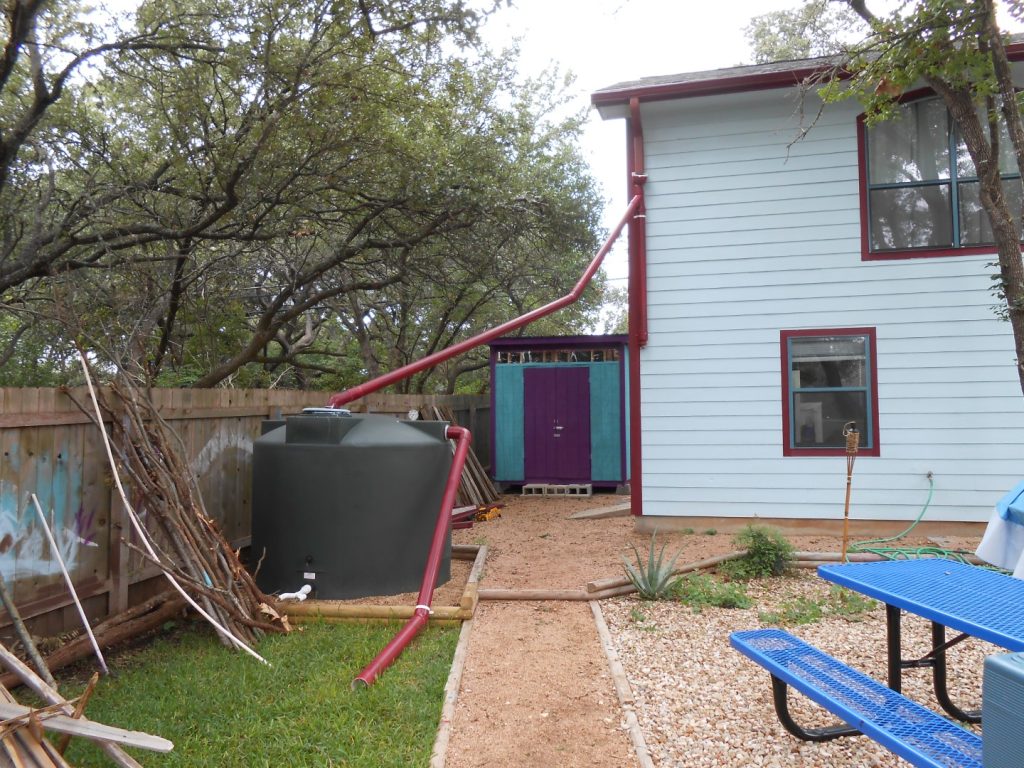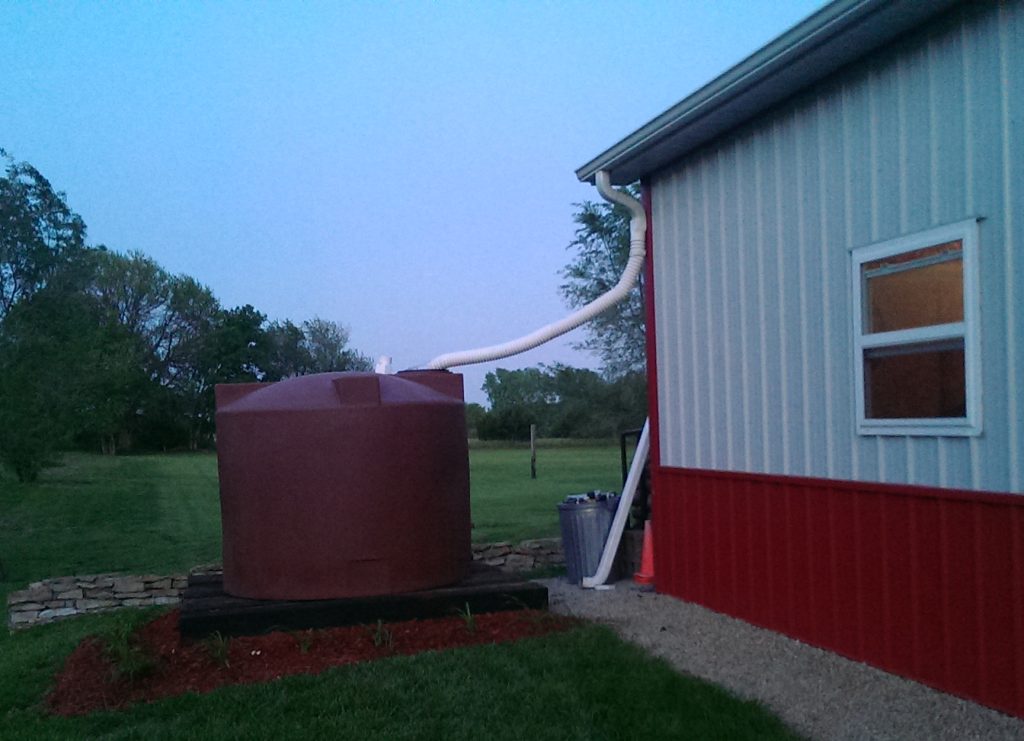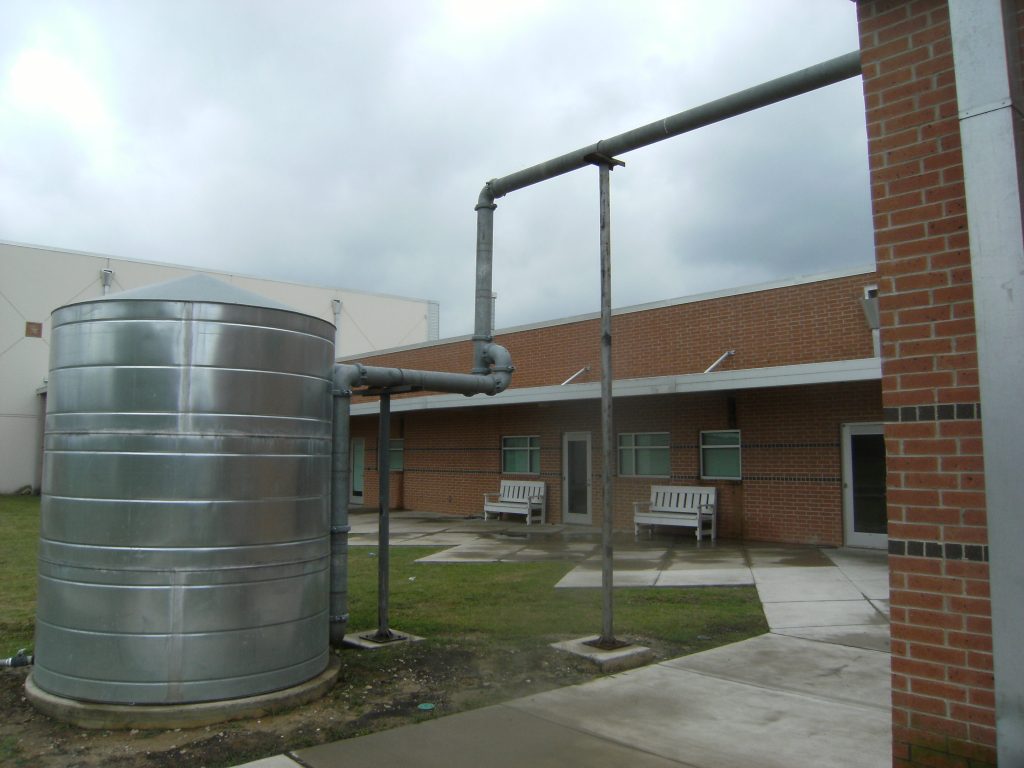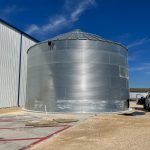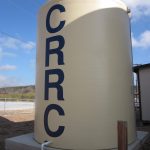To harvest rainwater, one needs to convey the rainwater from a catchment area such as a house roof into a rainwater storage tank. Did you know that there are two types of conveyance methods available… a “dry” conveyance and a “wet” conveyance method. Either type of conveyance method may be beneficial depending on your needs and house layout. In this article we will explore the pros and cons of the dry conveyance method, which is generally cheaper and easier to maintain than a wet conveyance method. We will refer to each of these conveyance methods “dry collection systems” and “wet collection systems”.
What is the “Dry” collection system and how does it work?
A dry collection system uses gravity to funnel rainwater from the catchment area (the area where rainwater is being collected) into the storage tank. A dry collection system is differentiated from a wet collection system in that the dry conveyance pipe will be dry when the rain event ends with no rainwater left in the conveyance pipe.
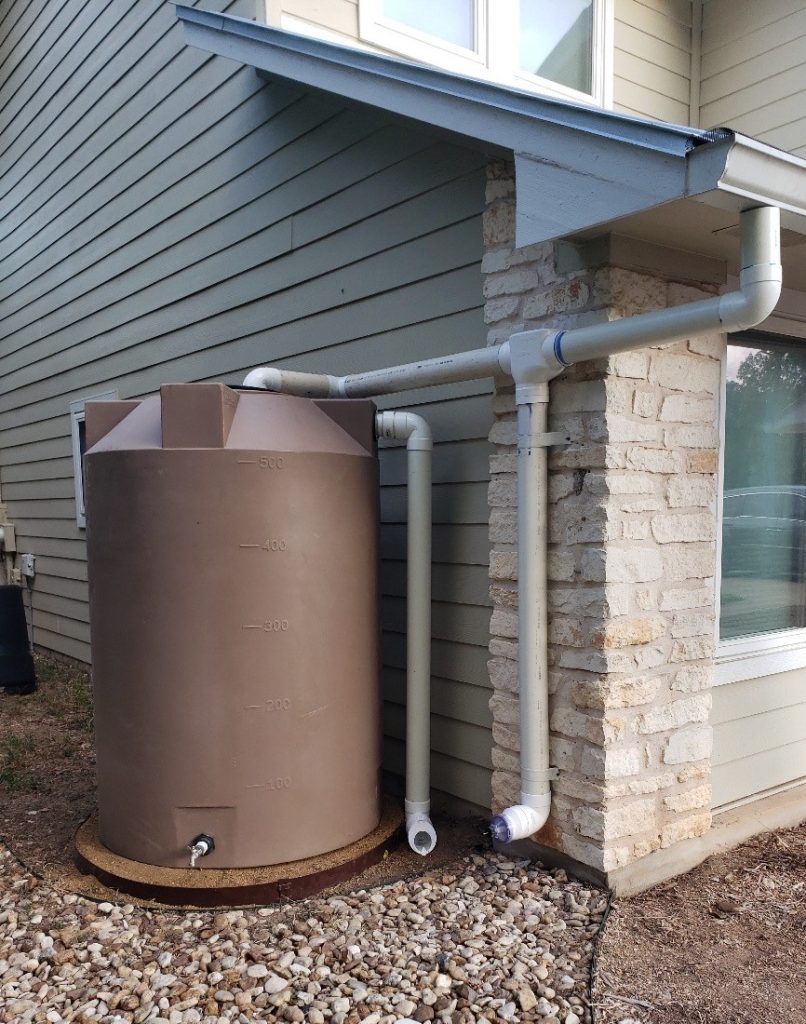
What are the advantages of “Dry” collection systems?
Quality of Water
Water collected in a dry rainwater collection system is high quality, as it comes directly from the roof and gutter and goes directly into the storage tank. A dry system also allows for the installation of a filter and first-flush system, ensuring an even cleaner rainwater supply entering the storage tank.
Simplicity of Installation
Dry collection systems are easy to install, making them a cost effective and hassle free option. Because dry conveyance piping is located above ground, they require less installation time and materials.
If the water storage tank is needed to be moved to another location onsite, relocation is easy and simple because the aboveground conveyance pipes can simply be disconnected and moved as needed.
Ease of Maintenance
Dry collection systems are easy to maintain since all of the piping is exposed aboveground. It is also easy to detect leaks and other problems with a dry system, as any problems are often visually detectable. Because dry collection systems allow water to go directly into the storage tank, there is less accumulation of contaminants (such as bacteria or insects) within the conveyance pipes. This removes the need to drain your pipes and simplifies any needed maintenance.
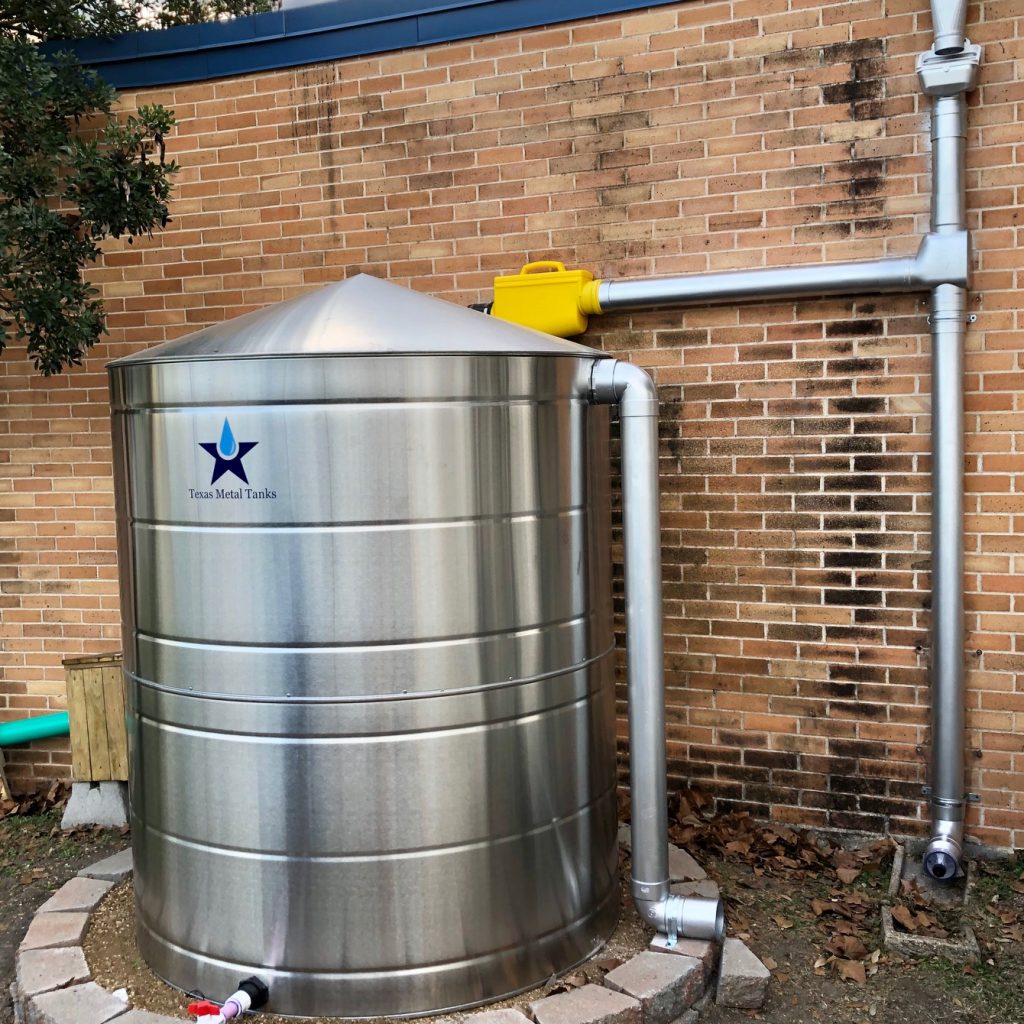
What are the disadvantages of “Dry” collection systems?
Water storage tank location
The main disadvantage of a dry collection system is that the water storage tank must be located close to the house, as dry systems rely on gravity and exposed pipes to divert rainwater into the storage tank. This limits the potential areas where a water storage tank can be located as typical houses have windows and other obstacles to worry about.
If you desire to locate the water storage tank away from your house and use a dry collection system, one would need some sort of aqueduct or “flying pipe” design. Supporting this flying pipe as it goes from the gutter to the tank inlet may be difficult and not sustainable over time.
Unappealing exposed plumbing
Because dry collection systems rely on aboveground plumbing, the piping is clearly visible. The aesthetics of the exposed piping may be less than ideal. In addition, large houses with multiple downspouts, or houses with complicated roof layouts, may require more extensive (and visible) piping. This could result in a ugly tangle of pipe on the outside of the house. Although this does allow for easy maintenance and installation, the plumbing can often be visually unappealing.
How do I know if a “Dry” collection system is right for me?
Dry collection systems are best for customers looking for a cost effective or low maintenance option. Dry collection systems are best suited for customers with a simple roof layout who only want to collect from one downspout (or two downspouts if they are located close together). However, customers looking to install a dry collection system should be willing to install a water storage tank close to their house.
Managing a “Dry” collection system
Although dry systems are easy to maintain, they still require some maintenance. Although debris and contaminants won’t be able to build up in the conveyance piping, debris can clog up inlet filters and first-flush diverters if they are installed. Also, debris can build up in the water storage tank over time so maintaining the tank should not be forgotten. In general, ensuring that overhanging trees and debris does not clog pipes is crucial to the function of your dry collection system.
Examples of Good “Dry” collection systems
Scroll through to see some good examples of dry collection systems.
Examples of Bad “Dry” collection systems
Scroll through to see some bad examples of dry collection systems.
If your rainwater harvesting system is in need of maintenance, or if you’d like to schedule a system assessment inspection, more information about Innovative Water Solutions’ maintenance services can be found here.
If you are interested in speaking to a customer representative about installing a rainwater harvesting system, we can be reached at 512-490-0932 or you can find more information about installation here.
Article contributions by Sophie West (Writing) and Roxanne Beck (Picture coordination)


